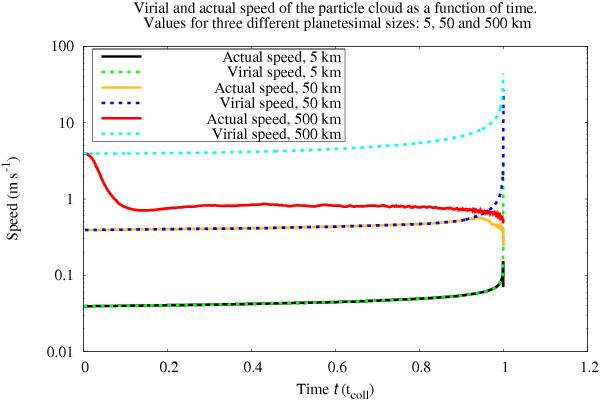Fig. 5

Virial and actual speeds from η and ηK as a function of time for three clouds of solid radii of 5 km (green and black), 50 km (blue and gold), and 500 km (cyan and red) with, initially, cm-sized pebbles. The low-mass cloud has a steadily increasing velocity because collisions are infrequent so that virialization can happen for each value of E. The massive cloud, on the other hand, dissipates energy too quickly and collapses cold with random pebble speeds much lower than the virial value. The initial virial speed is higher for the more massive planetesimal since the speed is a growing function of total mass (Eq. (1)).
Current usage metrics show cumulative count of Article Views (full-text article views including HTML views, PDF and ePub downloads, according to the available data) and Abstracts Views on Vision4Press platform.
Data correspond to usage on the plateform after 2015. The current usage metrics is available 48-96 hours after online publication and is updated daily on week days.
Initial download of the metrics may take a while.


